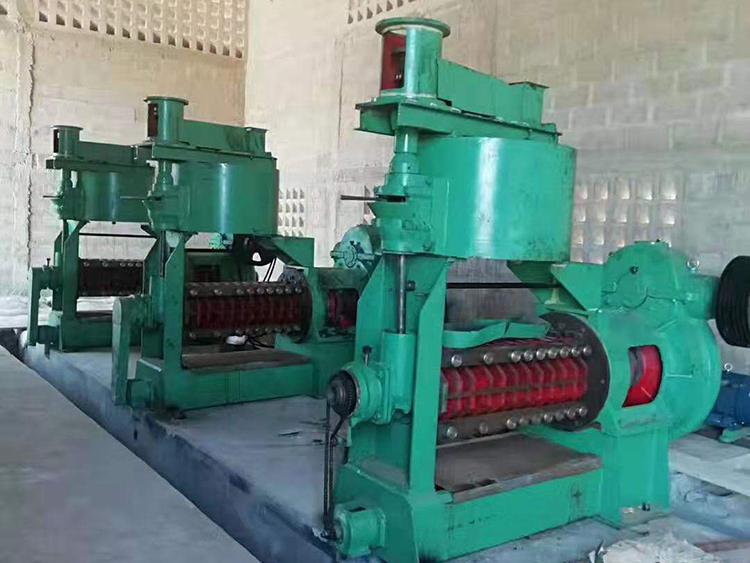Dis . 13, 2024 06:47 Back to list
safflower oil mill machinery factory
Understanding Safflower Oil Mill Machinery and Its Factory Dynamics
Safflower oil is derived from the seeds of the safflower plant, an annual thistle-like plant that is cultivated for its seeds and oil. The oil is renowned for its high content of unsaturated fats and is used in cooking, cosmetics, and as a dietary supplement. The production of safflower oil is heavily reliant on efficient machinery designed specifically for oil extraction, refining, and packaging. This article explores the dynamics of safflower oil mill machinery and the factory processes involved in producing high-quality safflower oil.
The Importance of Safflower Oil
Safflower oil boasts a high smoking point and is rich in polyunsaturated fats, making it an excellent choice for frying and baking. Additionally, it contains minimal saturated fats, promoting heart health when consumed in moderation. Beyond culinary uses, safflower oil is being increasingly recognized in the cosmetics and pharmaceutical industries for its moisturizing properties and potential health benefits.
The Machinery Involved in Safflower Oil Production
The manufacturing of safflower oil involves several stages, each requiring specialized machinery to ensure efficiency and quality. The major types of machines utilized in a safflower oil mill include seed cleaning processes, oil extraction equipment, oil refining machines, and packaging systems.
1. Seed Cleaning Machines Before extraction, safflower seeds must be cleaned to remove impurities and foreign materials. Seed cleaning machines often utilize screens, air blowers, and magnets to achieve desired purity levels. Clean seeds are essential for extracting high-quality oil and avoiding contamination.
2. Oil Extraction Presses The extraction of oil from the seeds can be conducted through various methods, the most common being mechanical pressing and solvent extraction. Mechanical presses, also known as expeller presses, crush the seeds to release the oil. This process retains most of the oil's natural flavors and nutrients. In contrast, solvent extraction utilizes chemical solvents to dissolve the oil, allowing for a greater yield, though this method may require more rigorous refining to ensure the oil is free from chemical residue.
3. Refining Equipment After oil extraction, the crude safflower oil undergoes refining to improve its taste, odor, and stability. This stage typically involves degumming, neutralization, bleaching, and deodorization. Each of these processes utilizes specialized machinery designed to remove impurities, free fatty acids, and color compounds, resulting in a pale, nearly odorless oil.
safflower oil mill machinery factory

4. Filling and Packaging Machines Once the oil is refined, it must be packaged for distribution. Modern factories use automated filling machines that ensure accurate measurements and quick packaging. High-quality packaging is crucial for maintaining oil integrity and shelf life while providing consumer information.
Technological Advancements in Safflower Oil Mills
The safflower oil milling industry has witnessed significant technological advancements, which have led to increased efficiency, reduced labor costs, and enhanced product quality. Innovative machinery integrates automated controls, ensuring consistent processing parameters and minimizing human error. Additionally, advanced filtration and refining technologies improve oil purity while retaining the natural properties of safflower oil.
Moreover, sustainability has become a focal point in safflower oil production. Many factories are now adopting eco-friendly practices and energy-efficient machinery to minimize their environmental impact. Biomass boilers and waste recycling systems are examples of how factories are moving toward greener production methods.
The Role of Quality Control
Quality control remains a pivotal element in the safflower oil production process. Machinery is equipped with sensors and software that monitor various parameters, including temperature, pressure, and oil quality indicators. Regular maintenance of equipment is necessary to ensure it operates optimally and produces high-quality products that meet industry standards.
Conclusion
The safflower oil mill machinery factory represents a blend of tradition and modern technology. As consumer demand for healthy oils continues to rise, the efficiency and effectiveness of safflower oil production will rely heavily on advancements in machinery and processes. Understanding and investing in high-quality machinery not only enhances production capabilities but also ensures that the final product delivers the health benefits consumers seek. The safflower oil industry stands as a testament to the interplay of agricultural production and industrial innovation, forming a vital part of modern food systems.
-
Popular Commercial Oilseed Crushing Machinery | High-Yield Oil Expeller Press
NewsAug.24,2025
-
Food Oil Refined Unit Companies: Leading Manufacturers & Exporters
NewsAug.23,2025
-
Expert Oil Filter Machine Service & Solutions | Quality & Reliability
NewsAug.22,2025
-
LZY-206 Double Screw Cold Oil Press – Maximize Yield, Preserve Nutrients
NewsAug.21,2025
-
Efficient Black Seed Oil Expeller & Multi-Seed Oil Press
NewsAug.19,2025
-
HP 120 Model Cold Oil Press-Hebei Huipin Machinery|Energy Efficiency, Multi-Functionality
NewsAug.18,2025
